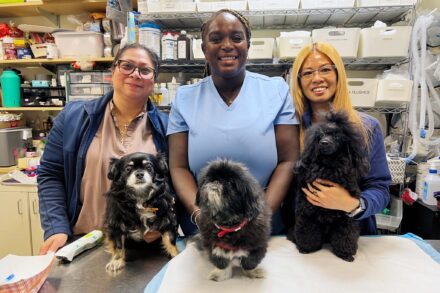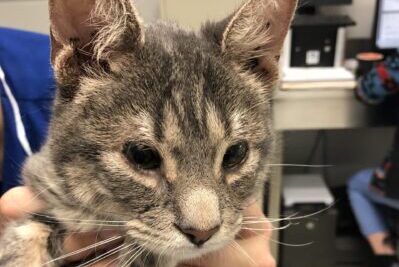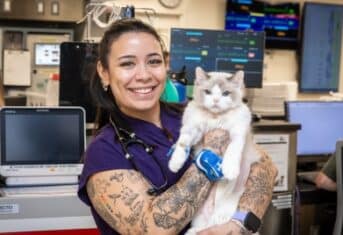World AIDS Day 2012: Getting to Zero for Cats Too!

World AIDS Day 2012: Getting to Zero for Cats Too!
The World Health Organization marks December 1st as World AIDS Day. For 2012, the chosen theme is “Getting to Zero.” World AIDS Day remembers those who have died from this terrible disease and educates those at risk of contracting it. This year’s theme focuses attention on the hope that someday there will be no human patients with AIDS.
Cats too suffer from a virus similar to HIV/AIDS in humans. Like our hope for zero AIDS patients, cat lovers everywhere hope to someday get to zero feline immunodeficiency virus (FIV) infections. This connection between AIDS and cats gives us a good opportunity to think about the thousands of cats infected with FIV and then talk about how to prevent your cat from this serious viral infection.
I started thinking about FIV recently when a feline patient, Yuki, came to The Animal Medical Center for an internal medicine consultation with a fever and an FIV infection.
Location, location, location
American cats are lucky: FIV infection is uncommon here, occurring in approximately 2.5% of all cats. Yuki came to the USA from Japan where, according to a recent survey, nearly 25% of cats are infected with this virus.
A high prevalence of FIV infections occur in countries where cats roam freely outdoors.
Although Yuki is a female cat, the typical cat with an FIV infection is male. Males have a greater risk of becoming infected with FIV due to their propensity for fighting and biting, which transmits the virus to uninfected cats.
FIV-related illnesses
Like AIDS, FIV infection can be asymptomatic, but there are certain diseases which are known to be associated with FIV infections. If your cat develops one of these diseases, your veterinarian will recommend FIV testing as part of a disease management strategy. Tops on my list of FIV-associated diseases are oral inflammation, ocular inflammation, neurological disorders, and bone marrow failure. FIV-infected cats are also predisposed to infections such as toxoplasmosis, giardiasis, ringworm, and recurrent upper respiratory viruses. Although this sounds grim, the lifespan of FIV-infected cats appears to be similar to uninfected cats.
Cats are first when it comes to a vaccine
For cats at high risk of developing FIV infection, a killed vaccine to protect against FIV is available. This vaccine is considered “non-core” and not all cats need to be vaccinated against FIV. FIV vaccination complicates FIV testing. The antibodies induced by the vaccine make FIV tests performed in veterinary clinics positive, even when the cat is not infected with the virus. Additional testing is needed to differentiate the FIV-infected cat from the vaccinated cat.
Getting to feline zero
- Test all kittens and cats for FIV before they meet your other cats.
- Keep FIV-infected cats separated from FIV-negative cats.
- Keep your cats indoors so they are not exposed to other cats infected with FIV.
- Neuter male cats to help prevent biting behavior which spreads infection.
- If you have an FIV-infected cat, make it an only cat and an indoor cat to prevent spread of the virus.
- Because the FIV vaccine is not considered a “core” vaccine, talk to your veterinarian about your cat’s risk of contracting this virus and the need for vaccination.


































